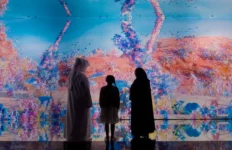Most museums protect and chronicle future history. Dubai’s history and traditions are easily accessible. Creek was the site of ancient human dwellings. Dubai’s past is worth exploring. Visit museums in Dubai, Abu Dhabi & Sharjah.
Related Categories
Things To Do Dubai | Burj Khalifa | Combos | Adventure In Dubai | Theme Parks | Museums | City Tours | Aquariums | Cruises | Desert Safari | Zoo
Al Shindagha Museum
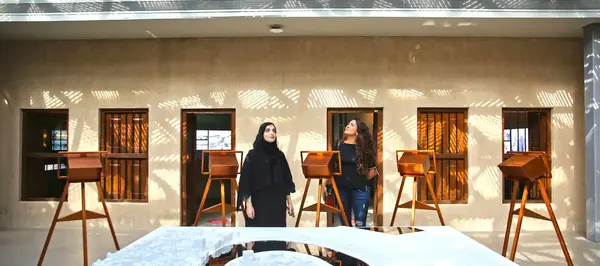
Dubai has added yet another attraction on the historically significant banks of the Creek. The Shindagha Museum, which has been open since 2019, is contributing to the transformation of the appearance of the older parts of Dubai. At this point in time, the museum has barely finished the first phase of construction. This will become a collection of 23 galleries when the project to revitalize the Dubai Historical Neighborhood is finally accomplished. Among these, the Perfume House was the first to open its doors to the public.
The Shindaga Museum is conveniently located just adjacent to the residence of Sheikh Saeed Ibn Al Maktoum. The museum is located in the former home of a renowned perfumer named Sheikha Shaikha Bint Saeed Bin Maktoum. A large chunk of oud weighing 28 kg that once belonged to her is currently on display in the museum.
The ‘Windows of Dubai’ exhibit is another component of the Shindagha Museum, and it provides perspectives on the development of Dubai both in the past and in the future. Augmented reality and other cutting-edge technology provide visitors a unique opportunity to interact with the world around them.
In the Shindagha Museum, there are a number of different display halls. The documentary ‘Governance and Society’ traces the history of Dubai’s ruling family with the development of the city’s contemporary landscape. Another exhibit titled “Creativity and Wellbeing” provides an explanation of the traditional arts and crafts in addition to traditional forms of medicine. ‘Living off the Land and Sea’ and a ‘Children’s Pavilion’ are the names of two additional galleries at the museum.
Our recommendation: A must-visit museum in Dubai. Make sure that this museum is on your list of places to visit before you go. This is essentially an upgraded version of the best museums in Dubai, featuring contemporary architecture and improved facilities across the board.
Museum of Illusions
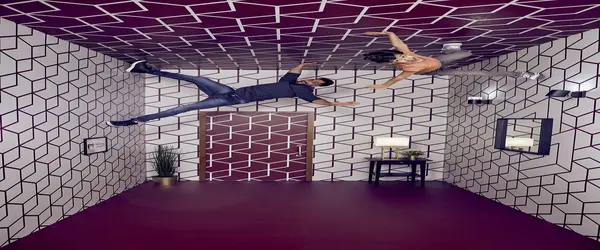
This is not at all like any other museum that I have been to. Illusions Museum can be found in Bur Dubai. A world of mind-boggling optical illusions may be found in Al Seef, which is located near the Creek. One of the many museums owned and operated by the world-famous museum chain with the same name, the Museum of Illusions can be found in Dubai. The one in Dubai is the largest of all of them, and it contains more than eighty different tricks and illusions to make your mind go haywire. The greatest amount of enjoyment will come from doing so for children.
The Ames room, the Slanted room, and the Vortex Tunnel are the three exhibits that draw the most visitors to this museum. In the Ames Room, you can make yourself appear larger or smaller than your acquaintance, and in the Slanting Room, you can appear to defy gravity. Visual effects in the vortex tunnel will trick your mind into thinking that the platform you are standing on is moving, even though it is actually stationary the entire time.
There are going to be a lot of places here that are perfect for Instagram. The vast majority of them are likely to be interesting in some way. You can spice things up with a dash of your own originality to make the whole thing even more amusing. In addition to that, they will provide you a scientific justification for the illusion. As a result, those who are younger will find that this is both entertaining and instructive.
Our recommendation: a wonderful presentation of both entertainment and educational material. A destination that should not be missed if you are traveling with children. Or even with your other close companions. Keep in mind that there will be many opportunities to capture pictures, and as a result, don’t forget to bring your camera along with you.
Louvre Abu Dhabi
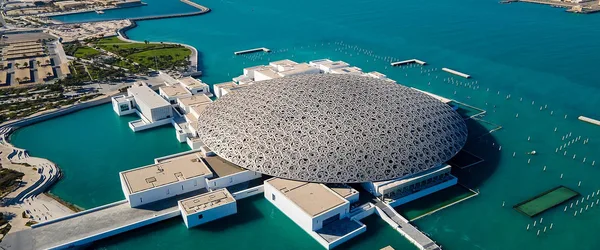
The outpost of the well-known cultural center in France that is located in Abu Dhabi is the most notable feature of the city’s art and culture scene. It is a gallery that is recognized on a global scale for its significance. In addition to housing works by famous painters such as Warhol, Pollock, Matisse, Manet, and Mondrian, the museum in the United Arab Emirates houses a vast collection of historical artifacts. These artifacts range from an ancient Egyptian sarcophagus to a comprehensive history of luxury goods and fashion over the decades. Expect to make multiple trips because there is more to see than you will be able to take in on a single visit.
Museum of the Future
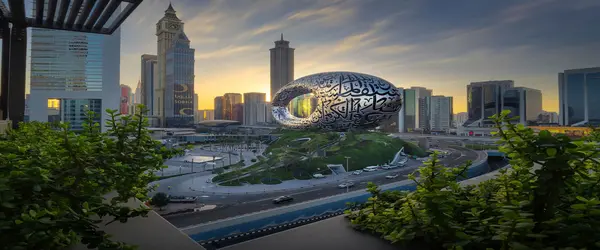
Even though it is one of the most recent museums to open in the UAE, it has already made quite a stir. Before it was opened to the public on February 22, 2022, the Museum of the Future in Dubai has already been hailed as “the most beautiful building in the world.” This is not your typical museum at all. The similarly impressive indoor area comprises three floors of immersive displays, which are focused on the potential futures of many things such outer space, health and wellbeing, and bioengineering. The installations are designed to be experienced by visitors. Pay a visit to acquire a taste of all the fascinating stuff that might soon be attainable in the not too distant future.
Etihad Museum
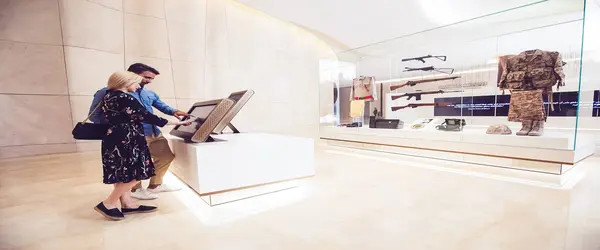
This relates to more recent events in the history of the nation. The Etihad Museum is widely recognized as a masterpiece of contemporary architecture. The Etihad Museum does not concentrate on depicting items from the distant past; rather, its primary concentration is on the time period following the peak of the oil industry. Particularly during the years 1968 to 1974, which coincided with the establishment of the United Arab Emirates. The meaning of the Arabic term ‘Etihad’ is ‘Union.’
Through the use of images, movies, and artifacts, the Etihad museum will take you on a journey through the contemporary history of the country. The museum can be found in Jumeirah, right close to The Union House, which is the location of the signing of the constitution. The Union House is open to the public without charge.
Attractive items include the founding fathers’ passports and personal possessions as well as an interactive touch panel that displays their family history going many generations back in time. An Emirati artist has created a massive artwork that depicts the political geography of the UAE. In the main hall, the seven golden pillars represent the pens that were used to sign the agreement, and the white dome, which is curved, represents the paper on which the agreement was signed. In addition to a lovely garden, a library containing more than three thousand items, and a coffee shop, the museum also has a bookstore.
Pearl Dubai Museum
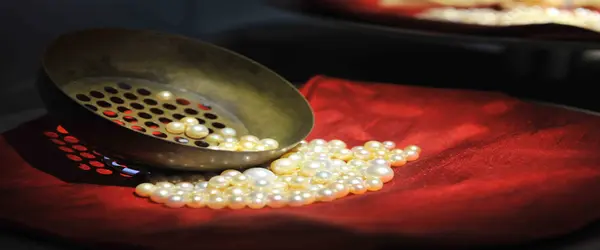
Pearls and gold were found in abundance in Dubai. Pearl diving was also a specialty of this region before it became famous as a center for the trade of gold. The legend of Arabian pearls spread far and wide across the globe. Pearl diving, however, became obsolete as a profession after the invention of artificial pearls and the development of modern diving gear. Today, it is the greatest repository of the most fragile pearls in the world, and it can be found in the offices of the National Bank of Dubai in Deira. The museum displays the many pieces of equipment, such as dhows and divers’ gear, that were utilized in the process of pearl diving in the past. There is a presentation that provides useful information regarding the many oyster species that inhabited the shallow water pearl beds and the types of pearl beds themselves.
Pearl divers with experience were aware of the specific spots in the ocean where they could find a certain type of pearl, and they would rotate the pearl beds that they harvested from so that each species could flourish. This demonstrates how the earliest humans had the foresight to steer clear of the brutal exploitation of natural resources. The Pearl Museum provides visitors with a wealth of knowledge regarding pearls. Pearls can be valued differently depending on their color, luster, shape, size, and weight. Pearls, in contrast to other precious stones, can be worn and utilized in their natural state, which is one of their many advantages. It is not necessary to perform any cutting or shaping on it. Pearls were once employed as a kind of payment in Dubai in addition to their more common use as jewelry. However, those days are long gone. In those days, a person wanting to become a pearl diver had to start their training as early as the age of ten.
The main gallery of the museum features a collection of pearls of all sizes, colors, and shapes that are kept safe behind a high-security glass window. Pearls are presented in the rooms that have strong lighting that produce a kaleidoscope of colors across the space. In addition, there is a display of ancient coins available to view in the museum. The late Sultan Ali Al Owais, son of Ali Bin Abdullah Al Owais, was the one who gave his personal pearl collection to the government so that it might be viewed by the public. His father came from the Al Shamsi tribe in Sharjah, and he was a prosperous pearl trader there.
Dubai Museum
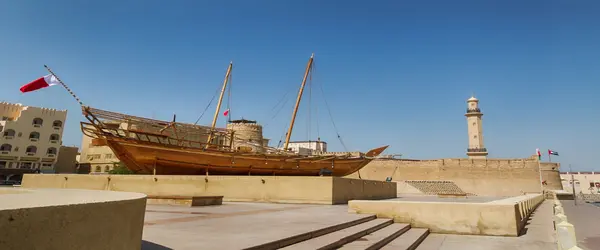
It has been around longer than any other museum in Dubai. This museum in Bur Dubai appears to be nothing special due to its location between several busy avenues and shopping areas. The big model of a wooden dhow that is displayed on top of it as well as the cannons that are situated near to the entrance will draw your attention to it, though.
Built during the end of the 18th century, this structure’s intended purpose was as a fort to defend the town against assaults from outsiders. The highest point of defense is protected by three watchtowers. Until the year 1896, this fort served as the ruler’s house; after that, it was converted into a jail. It was transformed into a museum in 1971 so that it could present Dubai’s history and culture to visitors. The cost to enter this museum is so tiny that it is essentially equivalent to nothing at all. After purchasing your ticket and going inside, you will be greeted by a quaint patio. This location contains some antique canons, a boat, and an Arish. The common people lived in a type of dwelling known as an arish, which was constructed with tree trunks and palm leaves. There are a few galleries off of the courtyard that display ancient Arab weaponry and artifacts. These galleries are open to the public.
However, the majority of the museum is really housed two levels below ground level. The entrance to the underground galleries is located at the bottom of a twisting slope. The dioramas are the most compelling aspects of these exhibition halls. You’ll get a glimpse into the daily lives of Arabs before the advent of the oil boom thanks to these life-size dioramas. There are representations of traditional Arab dwellings as well as marketplaces. The pearl diver in his diorama looks like he did a good job. You can see him diving; the only gear he has with him is a leather glove, a nose clip to prevent water from entering into his nose, and a rope tied around his ankle to pull him back up from the sea. The addition of light and sound to the event makes it that much more enjoyable. There is a specific part of the article that is devoted exclusively to the archaeological discoveries. Human bones as well as artifacts from the region’s old civilisation, which flourished roughly 4000 years ago and left its mark here, have been preserved. There is a display of historical government documents that became key milestones in the history of Dubai in another portion of the museum. These documents date back to the early days of Dubai.
Saruq al Hadid Museum
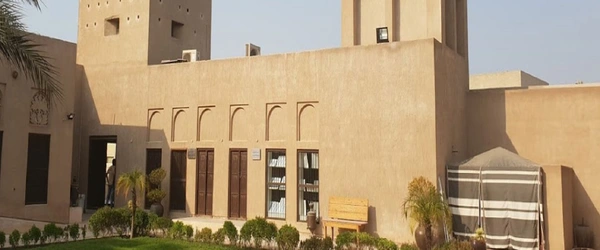
This one is like taking a trip through time. A very, very long time ago, during the era of iron. The archeological excavation site of Saruq al Hadid may be found in the southern part of Dubai, in the Rub Al Khali desert. It is widely regarded as one of the most historically significant locations on the Arabian peninsula.
In the year 2002, the ruler of Dubai was flying over the desert when he spotted this location and discovered it. He observed a certain area of sand that was noticeably darker than the rest of the surrounding sand. However, displays of the artifacts can be seen at a different city that is easier to reach. The Saruq al Hadid Museum may be found on the banks of Dubai Creek, tucked away amongst a variety of other historical structures. It is located within the walls of a historic home that was formerly owned by Sheikh Juma Bin Maktoum Al Maktoum.
Contrary to what the vast majority of us believe, there is evidence that human habitation in Dubai dates back thousands of years. This museum presents evidence of human habitation in this arid region as far back as the third millennium BCE. The story of the past is told at the Saruq al Hadid Museum through the utilization of cutting-edge technologies. There are audio and video presentations that are equally immersive and educational. In addition to the exhibits, the museum also offers interactive archeological experiences for visitors. You are welcome to roll up your sleeves and begin excavating items from the simulated excavation site in order to satisfy your curiosity. This will be very appealing to children.
Coffee Museum
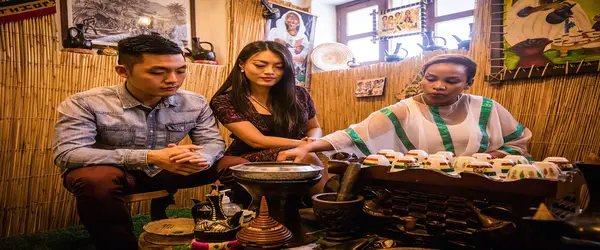
Coffee and the Arab world have a long and storied history together. They are credited with being the first people to enjoy coffee as a beverage for social or recreational purposes, and it is believed that they were the ones who spread the coffee culture to the rest of the world. The origin of the term “coffee” can be traced back to the Arabic word “kava.”
The story of the fascination that Arabs have had with coffee can be found at the Coffee Museum, which can be found in one of the many heritage houses that are located in the historical area of Al Fahidi. The historically significant antiques used for preparing coffee and drinking it are given their own area within the ornately embellished chambers. You can see the rotating rosters, pots, and grinders that were used in the past.
There are both auditory and visual demonstrations given regarding coffee, as well as the mythology that surround the beverage’s roots. You can even sample coffees from different countries and regions, such as Arabic, Ethiopian, and Japanese brews, among others. Coffee advertisements from the past written in German can be found gracing the walls here. One of the few museums in the world devoted solely to coffee culture, the Coffee Museum can be found in Dubai. There is also a modest library with numerous historical documents associated with coffee, such as the encyclopedia written by Johann Friedrich Von Pfeiffer, which has more than 170 pages dedicated to coffee.
Coins Museum
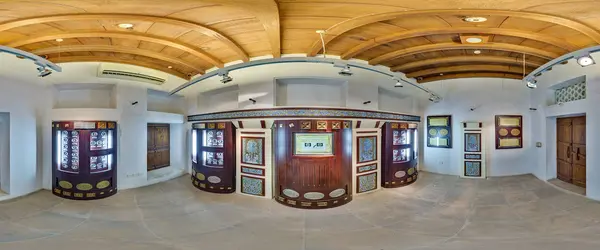
The Coins Museum, much like the majority of Dubai’s other historical museums, can be found in the city’s historically significant area of Bur Dubai. This one isn’t very big, but it has a lot of information to provide, plus it doesn’t cost anything to get in. There are around 470 coins on display, each with its own touch screen that provides information about them.
The Coins museum first opened its doors in the year 2004. The museum chose to locate in an older structure in the historic area that had two stories and was located close to the Ruler’s Dewan. Due to the use of coral stones and plaster in the construction of the buildings at this cultural site, all of the structures have the same mud-colored appearance. The museum is comprised of a total of eight different rooms, each of which has its own distinct focus. The first of them is responsible for preserving the history of coinage. The remainder have coins that are dedicated to various time periods and geographical places, ranging from the Rashidun Caliphate to the Umayyad and Abbasid civilizations, as well as other Islamic civilizations. In addition to coins manufactured in the United Arab Emirates, there are coins from Egypt, Turkey, North Africa, Islamic Spain, and the United Arab Emirates itself.
Naif Museum Dubai
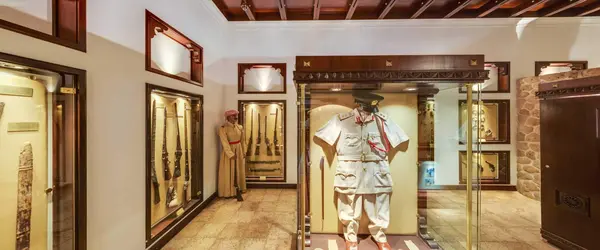
Everyone can get in for no cost to this one. However, in contrast to the other heritage museums in Dubai, the Naif Museum is located on the Deira side of the Creek, in a building that was originally part of the Naif Fort and was constructed in 1939. This was also the very first police station that had ever been built in Dubai. Sheikh Muhammad Al Maktoum issued an order in 1997 directing the transformation of one of the wings of this structure into a museum. The Naif Museum in Dubai is the place to go if you want to learn about the history and development of Dubai’s police and security agencies.
It is important to keep in mind that the security service in Dubai is among the best in the world when you go to the museum because you will be there. As a result, this museum serves as a tribute to the organization’s humble beginnings. This gives an understanding of how Dubai became a pioneer in maintaining law and order in the world. A free guided tour is provided by the museum as well. In this exhibit, you can see the evolution of the Dubai police uniform over the course of several decades, as well as the various kinds of weapons that were utilized by the police force in the early days. You have access to important documents and decrees that are connected to the police, as well as the former detention chambers.
FAQ for Museums
Which Dubai museum is largest?
The Museum of the Future is Dubai’s largest, measuring over 30,000 square meters. The museum shows what sustainable, creative science and technology will look like 50 years from now, making it unique. Structure’s architecture is as intriguing as its displays. Robots created parts of the edifice, giving us a preview. The Museum of the Future became one of Dubai’s most popular attractions within months of opening.
Which Dubai museum is oldest?
Dubai Museum was built in 1787 and is the city’s oldest building. Recreated models honor Emirati lifestyle before oil discovery. Bedouin dwellings, souqs, mosques, date fields, and more are modeled. The museum also offers traditional Emirati music, dancing, and educational events on Dubai’s history and culture.
Is Dubai museum photography allowed?
Dubai museums allow personal photos and movies without tripods or flash. At some special exhibits, photography is prohibited. Read every museum’s photography guidelines.
The best time to visit Dubai museums?
Dubai museums are best visited early in the morning or a few hours before closure. Avoid weekends and holidays due to overcrowding.
Does Dubai have guided museum tours?
Dubai museums lack guided tours. However, many offer audio guides so you can tour the museum at your own leisure and discover its attractions.



